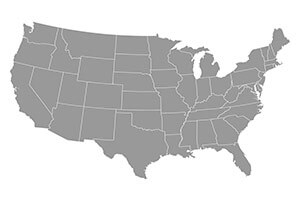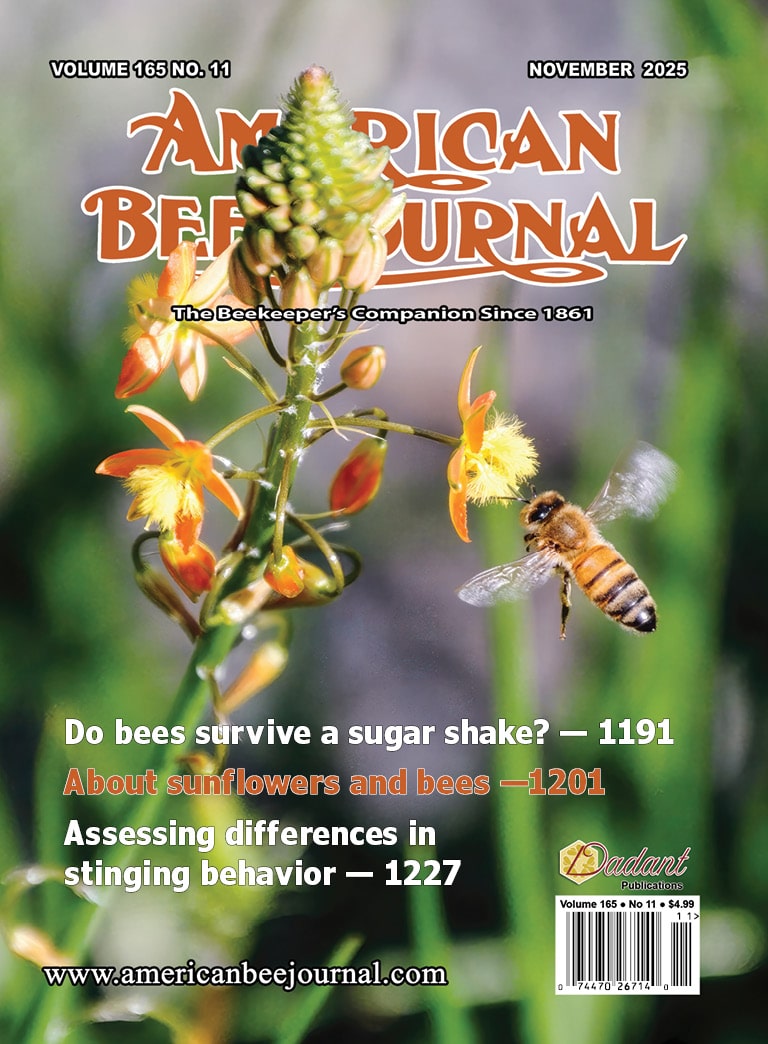
The year of COVID continues to make beekeepers’ lives interesting. Demand for local honey is greater than ever, as is appreciation for those who produce it. Supply houses have begun to gain ground, but still struggle to keep up with orders from a large and enthusiastic new crop of beekeepers. But with most state and regional conferences and local club meetings cancelled since mid-spring, and winter beginners’ workshops looking iffy, those beginners may be in for a rough winter.
Northeast
It’s been a good honey season in Pennsylvania. Colonies built up well in mid-spring, and things were looking average for the most part, but the spring/summer flow went longer than usual, led by clover and basswood. Then good ground moisture gave the goldenrod and asters a boost. Demand remains high for local honey, with small markets doing an especially good business, and wholesale product is moving steadily.
The fall flow was weaker in New York, due to hot, dry weather earlier in the summer. That and a cold spring combined to make this a down year for honey production.
New Hampshire experienced a serious drought, resulting in unusually poor basswood and knotweed flows, and a poor honey year overall. Some fall feeding is needed to top up hives for winter.
Maine, following a wet early spring, also saw very dry weather in many parts since. Some respite in mid-July was not enough to save honey producers from a down year. What honey is available is moving well both wholesale and retail. Retail customers continue to demand local, raw honey, especially in glass containers.
Mideast
After a wet early season, late spring and summer more than made up for it, and “the nectar flow lasted longer this year.” Strong sourwood and other summer crops ran into a strong goldenrod flow, and overall honey production ended up better than last year. That said, selling honey is more challenging due to COVID-related closures and event cancellations. But that is partially offset by higher prices.
Tennessee honey production is well down from last year. Heavy feeding will be necessary prior to winter. The good news is, “As of yet no yellow jackets or bald-faced hornets. And no giant hornets!”
They’re also feeding in eastern Kentucky, where despite a promising clover flow, colonies did not fully recover from the cold, wet spring. Things are a bit better in the south, where goldenrod and asters were productive, and both retail and wholesale markets are up.
Southeast
”The golden years of Florida honey production are long gone,” says one reporter in that state. This is the “new normal,” he adds, with no orange honey, lousy palmetto yield, and a tupelo crop that only hits one out of 10 years. What’s more, “Imports are killing us,” with “cheap foreign or adulterated honey moving into smaller markets.”
Retail markets have suffered as well, from the COVID-related shutdown of farmers markets, a prime outlet for many hobbyists and sideliners.
Alabama production is up about 10 percent, with goldenrod and crepe myrtle strong fall crops. Plants also seem to be blooming longer this year. Retail (especially Facebook) and wholesale markets are holding steady.
Southwest
The cool spring in Louisiana hurt early crops like willow, but clover and tallow flows were better, and the season looks to be about average overall. Retail sales continue strong.
After a slow start, honey production has improved in New Mexico, with coyote willow and Russian knapweed providing a boost. Colony stores look good at this point. High demand continues for local honey, both retail and wholesale, and drive-by pickup locations are a successful adaptation during the pandemic.
Much of Texas has been hot and dry, and a lot of the wildflower crop dried up by the end of July, but commercial beekeepers report that most colonies are in good shape and varroa is under control. Retail demand for honey continues to be high.
East Central
Wisconsin was “a hit-miss year” for honey production — average in the south and low to average in the north — with drought in the west and to some degree the southeast. Then record cold weather in late summer shortened the goldenrod/aster season. Feeding is necessary for many, and some are making plans to migrate south for the winter.
The pandemic-closed farmers markets pinched retail sales but also kept prices up. Wholesalers with grocery contracts were able to move product. Increased numbers of beekeepers continue to strain supplies of beekeeping and bottling equipment, with glass jars also in demand due to the heightened popularity of canning.
Northeastern Illinois reports a “perfect” combination of rain and other weather, and a much higher crop than usual — even without a decent fall crop due to an extended dry spell. The spring flow extended clear to the end of July, about three weeks later than normal. Even soybeans provided a crop: They “don’t normally give nectar here … but hot days and moisture made it happen.” To the south, yields were about average to slightly above.
Indiana production looks to be a bit above average. A northern sideliner reports, “The mood among beekeepers seems positive. As a rule bees look good, demand is good. What more do we want?” Yet management is a big part of that, he says; for example, those who overload their yards with 30-40 colonies pay for it with lower production — 40-50 lbs./hive vs 90-100 lbs. for yards limited to 10-15 hives.
West Central
Eastern Kansas had a “bumper crop” of honey this year, and a late swarm season to go with it. Goldenrod and smartweed were providing fall forage as of this report. The western side was dryer and production was down somewhat. A farm-to-consumer Facebook group in the state is being used extensively by hobbyists wanting to move their glut of honey.
Weather was generally good in the Dakotas, though a little on the wet side in eastern South Dakota. The alfalfa crop was good, and ….


